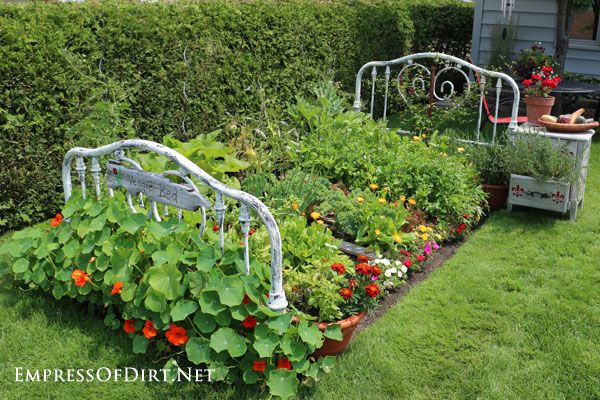Gardening vegetables for kids is not only a fun activity but also a valuable learning experience. Engaging children in gardening from a young age can teach them important life skills, instill a sense of responsibility, and encourage healthy eating habits. In this article, we will explore the various benefits of gardening for kids, as well as provide tips on how to make the experience enjoyable and educational.
One of the key advantages of gardening for kids is that it allows them to connect with nature and learn about the environment firsthand. By getting their hands dirty in the soil, planting seeds, and watching their vegetables grow, children develop a deeper appreciation for the natural world around them. Gardening also provides an opportunity for kids to learn about where their food comes from and the importance of sustainability.
Furthermore, gardening can help children improve their physical health by encouraging outdoor play and physical activity. In today’s digital age, getting kids away from screens and into the garden can promote exercise and reduce sedentary behavior. It also fosters creativity and problem-solving skills as they navigate the challenges of growing plants successfully. By introducing kids to gardening at a young age, we can sow the seeds for a lifelong love of nature and healthy living.
Choosing the Right Vegetables for Kids
When it comes to gardening vegetables for kids, choosing the right vegetables is key to ensuring a successful and enjoyable experience for the little ones. Opting for easy-to-grow options can help keep kids engaged and excited about the process. Some great vegetables to consider planting with kids include cherry tomatoes, snap peas, carrots, radishes, and lettuce. These vegetables are not only simple to grow but also tend to yield results relatively quickly, which can be rewarding for children.
Cherry tomatoes are a popular choice among kids as they are sweet and fun to pick off the vine. Snap peas are another favorite due to their crunchy texture and delicious taste. Carrots and radishes are both root vegetables that are easy for kids to plant and harvest.
Lettuce is perfect for beginner gardeners as it grows quickly and can be used in salads or sandwiches. By selecting these easy-to-grow vegetables, you can help foster a love of gardening in your children from an early age.
In addition to choosing the right vegetables, it’s also important to involve kids in the selection process. Take them to a local nursery or garden center and let them choose a couple of vegetable plants that they would like to grow.
This will not only make them feel more invested in the project but also teach them valuable lessons about responsibility and decision-making. By allowing kids to have a say in what goes into their garden, you’re helping them develop a sense of ownership and pride in their gardening efforts.
Getting Started
Starting a kid-friendly vegetable garden is a great way to introduce children to the joys of gardening and help them develop a love for fresh, healthy foods. When setting up a garden for kids, it’s essential to consider their interests, abilities, and safety. Here are some tips on how to get started:
Choosing the Right Location
Selecting the right location for your kid-friendly vegetable garden is crucial for its success. Choose a spot that receives plenty of sunlight throughout the day and is easily accessible to children. Make sure the area is safe and free from any potential hazards. It’s also important to consider the size of the garden based on how much space you have available.
Selecting Easy-to-Grow Vegetables
When starting a vegetable garden with kids, it’s best to choose vegetables that are easy to grow and maintain. Some kid-friendly options include cherry tomatoes, snap peas, carrots, radishes, and lettuce. These vegetables not only grow quickly but also offer a variety of colors, shapes, and textures that will capture children’s interest.
Involving Kids in the Planning Process
To make the gardening experience more engaging for kids, involve them in the planning process. Let them help choose which vegetables to plant, design the layout of the garden beds, and even decorate plant markers or signs. By giving children ownership over their garden project, they will be more invested in caring for their plants and watching them grow.
Setting up a kid-friendly vegetable garden can be a fun and rewarding experience for both children and adults alike. By following these tips and involving kids in every step of the process, you can create a space where they can learn about nature, responsibility, and healthy eating habits while having fun outdoors.
Fun Activities to Keep Kids Engaged in Gardening
Engaging kids in gardening vegetables can be a fun and educational activity that promotes healthy eating habits and teaches valuable life skills. To keep children entertained and interested in the process, incorporating fun activities into the gardening experience is key. Here are some ideas to keep kids engaged in gardening:
1. Planting a Rainbow Garden: Create a colorful garden by planting vegetables of different colors such as cherry tomatoes, purple carrots, yellow squash, and red bell peppers. Kids will enjoy seeing the rainbow of colors grow as they tend to their plants.
2. Garden Scavenger Hunt: Make a list of items for kids to find in the garden such as a ladybug, a flower bud, or a green leaf. This activity encourages observation skills and keeps children actively involved in the garden.
3. DIY Garden Markers: Get creative with garden markers by painting rocks or wooden sticks with the names of different vegetables. This personalized touch not only helps kids learn about plant identification but also adds a decorative element to the garden.
Involving children in these interactive activities not only makes gardening vegetables more enjoyable but also fosters a sense of responsibility and appreciation for nature. By creating a positive and engaging environment, kids are more likely to develop a lasting interest in caring for plants and growing their own food.
Teaching Kids the Basics of Plant Care
Another important lesson in plant care for kids is learning about sunlight requirements. By explaining to children that different plants have varying needs when it comes to sunlight exposure, they can understand why some vegetables thrive in direct sunlight while others prefer partial shade. This knowledge not only helps kids become better gardeners but also fosters their curiosity and understanding of the natural world around them.
Additionally, teaching kids about soil health and nutrients is crucial in plant care. Explaining to children the importance of fertile soil, proper drainage, and adding organic matter like compost can help them appreciate the interconnectedness between soil quality and plant growth. By instilling these fundamentals early on, parents and educators can empower children to become more knowledgeable and confident in their gardening endeavors.
| Plant Care Tips for Kids | Benefits |
|---|---|
| Water plants properly | Develops responsibility and prevents over/under watering |
| Understand sunlight requirements | Fosters curiosity about nature and improves gardening skills |
| Learn about soil health and nutrients | Empowers children with knowledge on how soil quality impacts plant growth |
Creative Ideas for Garden Projects With Kids
When it comes to gardening vegetables for kids, incorporating fun and creative projects can make the experience even more enjoyable for children. Not only will these activities keep them engaged, but they also help foster a love for nature and gardening at a young age. Here are some creative ideas for garden projects that you can do with your kids:
- Create a “pizza garden”: Plant ingredients like tomatoes, bell peppers, basil, and oregano in the shape of a pizza slice. As the plants grow, kids can learn about different herbs and veggies used in making pizza while having a blast tending to their garden.
- Build a scarecrow together: Get creative with old clothes, straw, and other materials to build a scarecrow to protect your garden from pests. Let the kids decorate the scarecrow’s face and outfit. This project not only adds a fun element to the garden but also teaches children about pest control.
- Make plant markers: Help kids create personalized plant markers using colorful popsicle sticks or rocks painted with the names of each vegetable they have planted. This not only helps them identify the different plants in their garden but also adds a touch of personalization to their gardening experience.
Engaging children in these hands-on projects not only teaches them valuable skills such as responsibility and patience but also allows them to connect with nature in a meaningful way. Encourage their creativity and let them take ownership of their garden projects, fostering a sense of pride in their accomplishments as they watch their vegetables grow. By making gardening an engaging and interactive experience, you are setting the stage for a lifelong love of gardening in your children.
Harvesting and Enjoying the Fruits of Their Labor
When it comes to gardening vegetables for kids, one of the most rewarding experiences is being able to harvest the fruits of their labor and enjoy the fresh produce. Not only does this teach children about where their food comes from, but it also allows them to get creative in the kitchen with cooking recipes using garden-fresh vegetables.
This hands-on experience can instill a sense of pride and accomplishment in children, making them more likely to continue gardening and eating healthily in the future.
One simple yet delicious recipe that kids can make using garden vegetables is a colorful vegetable stir-fry. Children can help wash, chop, and mix a variety of veggies such as bell peppers, carrots, broccoli, and snap peas.
Stir-frying these vegetables with a dash of soy sauce and seasoning not only encourages kids to eat their veggies but also introduces them to basic cooking techniques. This recipe is versatile and can be customized based on what is growing in the garden at any given time.
Another fun recipe for kids to try using garden vegetables is homemade vegetable pizza. Children can assist in making the pizza dough from scratch or choosing whole wheat pita bread as a healthier alternative. Topping the pizza with freshly harvested cherry tomatoes, bell peppers, zucchini, and basil provides a nutritious meal that kids will enjoy making just as much as eating. Encouraging creativity by letting them arrange the toppings themselves makes this cooking activity even more exciting for children.
| Benefits | Details |
|---|---|
| Teaches Kids About Food Sources | Harvesting homegrown vegetables show children where food comes from. |
| Promotes Healthy Eating Habits | Cooking with fresh garden produce encourages kids to eat more vegetables. |
| Develops Basic Cooking Skills | Recipes involving garden vegetables help children learn essential skills in the kitchen. |
Encouraging a Lifelong Love for Gardening in Kids
Introducing Variety in Vegetables
One way to foster a love for gardening in kids is by introducing them to a wide variety of vegetables to grow. While it’s important to start with easy-to-grow options like cherry tomatoes, radishes, and lettuce, gradually introduce more challenging vegetables like carrots, cucumbers, and bell peppers. By showing kids the diverse range of vegetables they can cultivate in their garden, you’re helping expand their palate and appreciation for fresh produce.
Setting Long-Term Goals
To instill a sense of ownership and responsibility in children towards gardening, encourage them to set long-term goals for their garden. Whether it’s aiming to have a successful harvest of pumpkins by Halloween or growing enough peas to share with friends and family, having goals will keep kids motivated and engaged throughout the gardening process. Celebrate achievements along the way, no matter how small, to keep their enthusiasm alive.
Community Involvement
Another way to nurture a lifelong love for gardening in kids is by involving them in community gardening projects. Whether it’s participating in a school garden or joining a local gardening club for children, being part of a larger community of like-minded individuals can inspire kids to continue cultivating their green thumb well into adulthood.
Through shared experiences and learning from others, children can develop not only their gardening skills but also a sense of belonging and connection to nature.
Conclusion
Gardening vegetables for kids is not only a fun and educational activity, but it also has numerous benefits for their development. From teaching them responsibility and patience to fostering a love for nature and healthy eating, gardening can have a lasting impact on children. By involving them in the process of selecting, planting, caring for, and harvesting vegetables, kids can learn valuable skills and gain a sense of accomplishment.
As parents or educators, it is essential to choose the right vegetables that are easy to grow and maintain for kids. Vegetables like cherry tomatoes, snap peas, carrots, and lettuce are great options that are not only simple to grow but also appealing to children. Creating a kid-friendly garden with colorful plants, easy-to-reach beds, and whimsical decorations can further enhance their gardening experience.
To keep kids engaged in gardening vegetables for kids, incorporating fun activities like scavenger hunts, painting plant markers, or creating a worm compost bin can make the process enjoyable. Teaching them the basics of plant care such as watering schedules, weeding techniques, and pest control methods will help them understand the importance of nurturing their plants.
By encouraging creativity through garden projects like fairy gardens or themed plots, kids can unleash their imagination while learning about different aspects of gardening. Ultimately, by harvesting the fruits of their labor and cooking delicious recipes with garden vegetables together with kids, you can instill a lifelong love for gardening in them.
Frequently Asked Questions
What Are the Easiest Vegetables to Grow for Kids?
Some of the easiest vegetables for kids to grow include radishes, lettuce, and cherry tomatoes. These vegetables have relatively short growing seasons and are low-maintenance, making them ideal choices for children who are new to gardening.
What Vegetables Are Good for Kids to Grow?
Vegetables that are good for kids to grow are those that are fast-growing, like carrots and snap peas. These vegetables allow children to see results quickly, which can keep them engaged and excited about gardening. Additionally, vegetables with vibrant colors or interesting shapes like rainbow chard or purple cauliflower can spark curiosity in young gardeners.
What Is the Best Vegetable Garden for Kids?
The best vegetable garden for kids is one that is easy to access and maintain. Raised beds or container gardens can be great options, as they reduce the need for bending or kneeling down while tending to plants.
Including a variety of vegetables in the garden can also make it more exciting for kids to explore and learn about different types of plants. Additionally, incorporating fun elements like sunflowers or strawberries can add an extra element of joy to the gardening experience for children.

If you’re looking to get into vegetable gardening, or are just looking for some tips on how to make your current garden better, then you’ve come to the right place! My name is Ethel and I have been gardening for years. In this blog, I’m going to share with you some of my best tips on how to create a successful vegetable garden.





